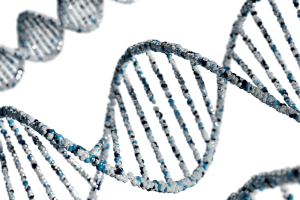The Phenomics Australia Histopathology Node based in the University of Melbourne provides a unique set of services to biomedical researchers across Australia. The histopathology and necropsy services allow researchers to evaluate and phenotype modified, treated or genetically engineered mice at all developmental stages. The node also allows for the analysis of mice kidney and lung samples following antibiotic treatment. Such research contributes to the ongoing fight against the rise of Multidrug Resistant (MDR) Bacteria.
~ Rhyannah Hamer

Phenomics Australia Histopathology Node consists of a team of experienced medical, veterinary pathologists and mouse pathobiologists who determine whether changes or pathology identified are strain related, age related, incidental or a true diversion from normal. This allows mouse strains to be validated and therefore used as models of human disease.
There is no other service of this kind in Australia, and it currently provides support to over 100 Australian groups across 20 biomedical research institutions. Just one of the groups utilising these services are Professor Li and his team from the Monash Biomedicine Discovery Institute.
Professor Li is the Head of the Antimicrobial Systems Pharmacology Laboratory at the Biomedicine Discovery Institute, Monash University. He is a world-leading expert in the pharmacology of polymyxin, one of the very few antibiotics that are able to fight off MDR Bacteria.
Since 2013, Professor Li and his team have been utilising the unique services offered by Phenomics Australia Histopathological node for their antibiotic discovery project. Professor Li approached Phenomics Australia Histopathological node for
assistance in preparation, scoring and semi-quantitative analysis of kidneys and lungs from mice treated with polymyxin analogues.
Samples are delivered to Phenomics Australia Histopathology Node monthly for analysis. The team at the node then process, evaluate and issue a report and scoring, digitised images and stained slides for Professor Li and his team to collect. Due to the success of the collaboration, there have been a number of publications and advancements in drug development for Multidrug-Resistant Organisms. Furthermore, several superior lead molecules have been identified for further pre-clinical evaluations.
As of today, Phenomics Australia node has handled over 400 samples and generated over 2TB of polymyxin nephrotoxicity data provided by Professor Li and his team. The node has received extremely positive feedback from Professor Li and his team regarding the high quality of work and the impact the node is having on his research outputs.
‘We regard Phenomics Australia Histopathology Service as an essential facility for biomedical research, in particular on drug discovery, in Australia. It has been extremely valuable for my research in the discovery of novel antibiotics and antimicrobial pharmacology funded by the Australian NHMRC and USA NIH.” -Professor Jian Li, Head of the Antimicrobial Systems Pharmacology Laboratory, Biomedicine Discovery Institute, Monash University.’
Such collaboration between institutions is vital for the development of antibiotics that are able to fight MDR Bacteria. MDR Bacteria have become more common in both the public and private health sectors across the globe, causing severe illness and death in many patients. Initial research shows that a continued rise in resistance would lead to 10 million people dying every year and a reduction of 2% to 3.5% in Gross Domestic Product (GDP) by 20501. The global cost would be up to 100 trillion USD worth of economic output if a solution on how to combat MDR bacteria is not found1.
The antibiotic discovery project is ongoing and has a dedicated rodent pathobiologist/histologist to continue analysis of the samples. There are a very limited number of people that are trained to do this in Australia. Comprehensive research into antibiotics is important in order to combat the issue of MDR bacteria.
Furthermore, antibiotics often have major side effects on patients such as kidney damage. Mouse model analysis facilitated by Phenomics Australia Histopathology Node is integral for evaluating the detailed kidney histopathology. Such research will hopefully be used to combat these side effects of antibiotics in patients.
The combatting of MDR Bacteria is a huge global challenge that needs to be addressed before the health and economic impacts begin to take effect. The collaboration between Professor Li and his team and Phenomics Australia Histopathology Node is but one example of the important work that Phenomics Australia is able to facilitate. The node’s continued involvement with this antibiotic discovery project has a direct impact on the wellbeing of the Australian community.
References:
- O’Neill, J. 2014, Antimicrobial Resistance: Tackling a crisis for the health and wealth of nations, Review on Antimicrobial Resistance, https://amr-review.org/sites/default/files/AMR%20Review%20Paper%20-%20Tackling%20a%20crisis%20for%20the%20health%20and%20wealth%20of%20nations_1.pdf







